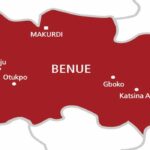Residents of a Muslim-majority town in southwestern China clashed with police last weekend as they tried to stop the demolition of a mosque – a move seen as part of the Chinese Communist Party’s expanding effort to control religion.
Over the years, Beijing has relentlessly pursued a policy of “sinicising” religion – a term used to describe attempts to give a Chinese character to different faiths, especially Islam.
At the centre of the experiment is Najiaying village in Yunnan province, an ethnically diverse region nestling along China’s border with Southeast Asia.
Last Saturday, dozens of police officers wielding truncheons and riot shields repelled a crowd outside the Najiaying mosque, videos circulating on social media and the witnesses said.
Police have made an unspecified number of arrests over the incident, and several hundred officers remained in the town as of Monday, according to the two witnesses.
“The mosque is home to Muslims like us. If they try to knock it down, we certainly won’t let them,” a local woman was quoted as saying by the AFP news agency.
Theat to Hui ethnicity
In the vast and diverse nation of China, Hui Muslims stand as a remarkable community that has survived a turbulent history marked by hardship and resistance.
The origins of the Hui people can be traced back many centuries. It is believed that their ancestors were primarily Arab, Persian, and Central Asian traders and scholars who travelled along the ancient Silk Road to China, settling in various regions of China and intermarried with the local Chinese population.
Throughout the centuries, the Hui Muslims have admirably blended their Islamic faith with Chinese customs and traditions. Embracing Mandarin or local dialects for communication and adopting Chinese surnames, they have displayed a remarkable ability to harmoniously integrate into the broader Chinese society.
Mosques, their sacred spaces, have served not only as centres of worship but also as crucial communal hubs where the Hui people have fostered a sense of solidarity and preserved their religious heritage.
However, the “sinicisation” campaign poses a threat to their deeply cherished traditions and practices, fostering concerns among Hui activists and communities who fear the erosion of their identity and the stifling of religious freedom.
The attempted demolition of the Najiaying mosque is not the first tense confrontation Hui Muslims have had with authorities in defence of their mosques.
Hui activists have revealed that over the past few years, authorities have systematically dismantled Islamic architectural elements, destroying domes and tearing down minarets across more than a thousand Hui mosques nationwide.
In 2018, a significant incident unfolded in Ningxia, situated in the northwest region of China, as thousands of Hui residents embarked on a three-day sit-in protest, aiming to prevent the authorities’ plans to demolish a newly constructed mosque, characterised by its grand minarets and domes inspired by Middle Eastern architectural styles.
The events in Ningxia unfolded against the backdrop of the implementation of the “de-Arabisation” and “de-Saudisation” campaigns initiated by the Chinese government after the new Regulation on Religious Affairs took effect in February 2018. This campaign targeted not only Ningxia but also other regions in China with significant Muslim populations.
The local authorities in Ningxia explicitly declared their intention to gradually rectify religious sites that exhibited Arabic influences.
They emphasised the need for newly constructed or renovated buildings throughout the region to reflect traditional Chinese styles, effectively discarding the distinctive architectural features that symbolised Hui Muslims’ religious identity.

 Join Daily Trust WhatsApp Community For Quick Access To News and Happenings Around You.
Join Daily Trust WhatsApp Community For Quick Access To News and Happenings Around You.


